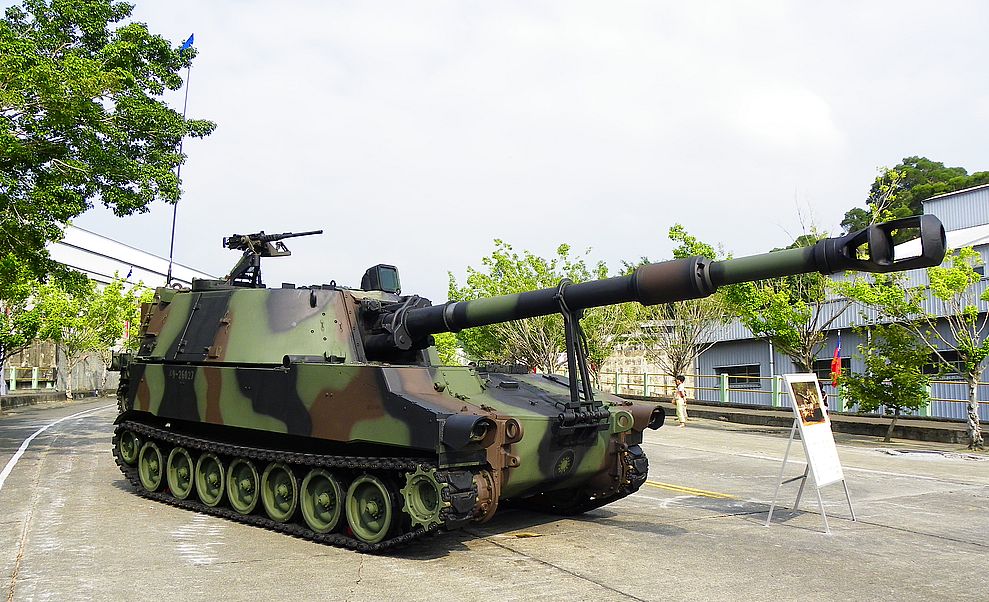
SHAH ALAM: Looking at some of the comments posted here and at the Malaysian Defence Facebook page, I sometimes feel uneasy about posting things like the failed Blackhawk deal. But I guess we cannot have sunshine without the storm.
And the sunshine in our case this time around is the M109s. We are getting the M109s SPH, which I had reported exclusively here late last year. Story here.
The M109s will be upgraded to the latest A5 standards though I have not been told the details of the refurbishment deal. It is likely that it will be minimal. And no, we are not supposed to get the Paladin version as touted by the various copy and paste guys.
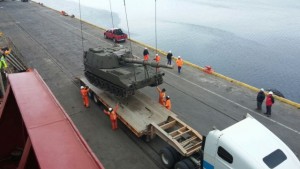
Even though the SPH are ex-US Army National Guard stock, the order is finally coming through unlike the Blackhawks and the Mark V SOC. Mark V SOC story.
I was told that Malaysia will assumed ownership of the SPH in the next couple of weeks. The transfer of ownership is part of the Excess Defence Articles program before any work on the SPH can start or delivery can take place. Uncle Sam will not want to pay for items it had already retired and already offered to friendly countries hence the need for the transfer of ownership.
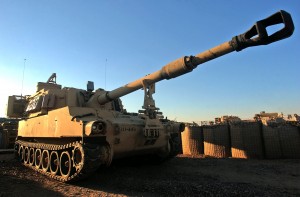
Its just like buying your uncle old bike or car, he wants to get the money first before you can modify the vehicle. And if you did modify the vehicle bright purple or fixed the loudest exhaust you can find, your uncle can tell everyone that he had sold it to you, so its your fault, not his. (I know I should find another analogy but I think this is the simplest one).
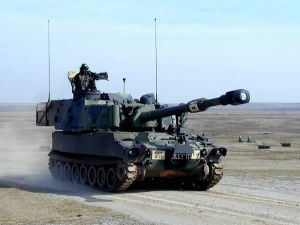
As I had posted previously, the number of the M109 SPHs we are getting is around 30 though the actual numbers to be refurbished is still unclear at the moment. The M109s will be assigned to a unit of the Royal Artillery Regiment.
At least one battery will be part of Task Force 450 stationed in the ESSCOM AOR. Malaysian Defence had reported the Army Chief as saying that the M109s will be based in ESSCOM as part of the soon to be set-up Combined Arms Brigade (it is now called Task Force 450).
Probably the whole regiment could be part of ESSCOM but a number will definitely be assigned to the Artillery school in Port Dickson for training and other tasks.
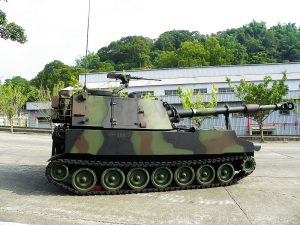
The M109s are expected to be delivered next year, after refurbishing and training are conducted, though I have yet to be told of the exact dates.
Happy Merdeka!
— Malaysian Defence
If you like this post, buy me an espresso. Paypal Payment


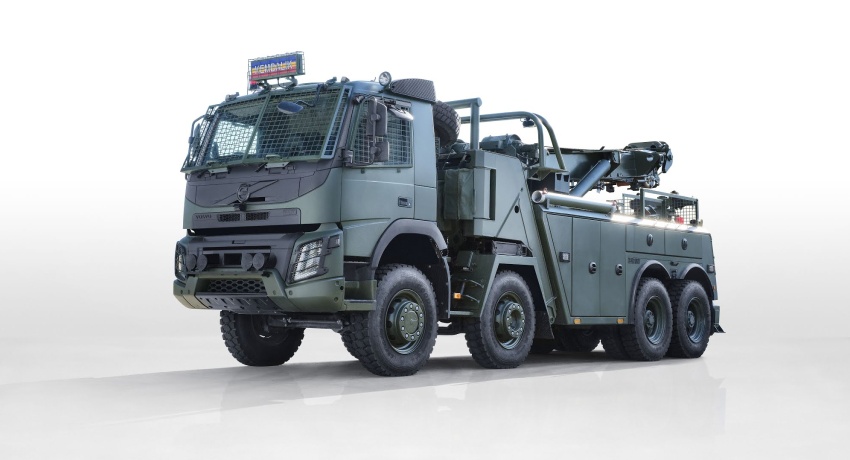
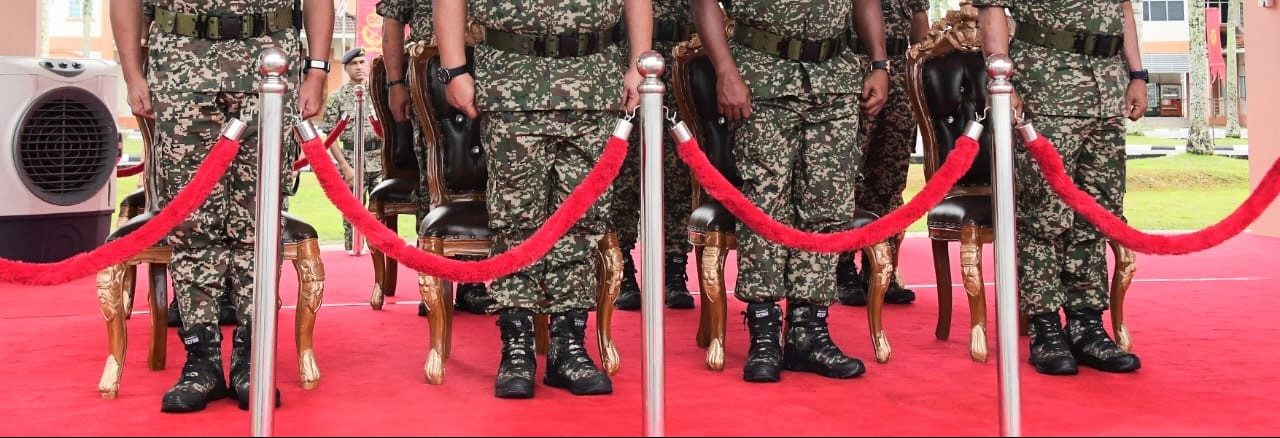
Fun fact; upgrsded M109 (offered by swiss company) is actually shortlisted for Norwegian SPH programme (along with K9)
This older platform actually managed to beat both PzH2000 and Caesar during the trial
Wait. Isn’t M109A6 suppose to be?
Reply
Not the Paladin, which is the former designation of the A6/A7. I had always written that we are getting A5 or A5++. If you want to believe what others said it’s up to you.
How many guns are in an ATM battalion anyway?
Reply
I am not really sure actually, perhaps someone can chip in .
There’s an artillery camp in the nearly final stages of completion in Kajang as buildings, surveillance tower and pillbox can already be seen right by the highway connecting the town to Putrajaya. In coming years, artillery convoys surely will be hive of activity along side the completion of this camp.
Reply
The camp is the replacement for the 31 RAR that has to vacate Sg Besi airbase
Well thqt is a good news as our close neighbours are also getting their m109 soon (from European stocks)
2017 Nat.Day no see Blackhawk but see M109A5, I bet somebody will get confused and will post on the net “Army received a new tank”.
A5 or A6 doesnt matter, as long as can fire on demand, on time, on target. An existing battalion change its Pack 56 to M109A5? Looks like good chance for RAR AW to have its own Pack 56.
Reply
They tend to prefer new units instead of just swapping kits especially when it comes to new kits. We will have to wait and see
Have you guys seen the upgraded pt-91 from Poland called the pt-16?
New turret with autoloader 120mm gun firing nato rounds.
Reply
I Googled it and found it.
Tom Tom,
You mean ”regiment”. We have no artillery battalions per say. Each regiment will have several batteries and each battery will have several guns. Not sure if we have 6 or 8 Model 56s in each battery.
During the 2nd Emergency it was common for 2 or even 1 gun to be placed in direct support of a infantry unit. In theory an artillery regiment could consist of a single battery of 4 guns or 3 batteries of 4 guns each – depends. At times the composition of a battery will be dependent on the number of guns we have. With the FH-70s it was a battery of 9 and a training battery of 3.
The downside of having 155mm in East Malaysia is that there is no range there that can take 155mm. Sure, crews of the East Malaysia based battery can live fire at Gemas but it makes more sense to live fire in ESSCOM with units they are intended to support. Instead of being based in penny packets, ideally all the M-109s would be based in the same area. Makes it easier logistics and training wise and enables one to mass fire.
…..,
Remains to be seen if there will be any takers. In the early 2000’s KDMB saw good prospects with its 120mm T-84 and a bustle auto loader but didn’t sell any.
The expected one, the dream not come true but the unexpected one, the dream may come true.
Let’s wait until it official sign..
Reply
Its ours by all account, just waiting for the day
“The camp is the replacement for the 31 RAR that has to vacate Sg Besi airbase”
“Looks like good chance for RAR AW to have its own Pack 56.”
What is RAR?
Reply
Royal Artillery Regiment or Regimen Artileri DiRaja
Q1. Why the need for 155mm SPH in ESSCOM?
Q2. if there is a lack of training areas in East M’sia, can the M109A5++/A6 fire Excalibur?
Reply
If you are asked me I will say there is no need for 155mm SPH in ESSCOM but since the Army wants it there, what can I say.
Sorry, just checked. Apparently M109A6 can fire Excalibur, so says Wikipedia.
Not sure how accurate that info is.
Tom Tom,
There is no need for 155mm guns in ESCCOM for use against non state threats but for use against possible state threats then we can see a use for it. As I’ve mentioned previously, we might be using ESCCOM – to avoid ruffling the feathers for a neighbour – as a pretext to also improve our conventional capabilities there. If there is no range that can take 155mm then obviously, anything fired out of a 155mm gun – whether a standard round or a guided one – can’t be lived fired.
“Sure, crews of the East Malaysia based battery can live fire at Gemas”
Would you know the range of firing that Gemas can support?
You mentioned the Astros have used a sea range before, would that have anything to do with the Gemas range not being large enough?
They do things differently in Indonesia.
“Indonesian Army Artillery Corps plans to acquire 20 M109 self-propelled howitzers from surplus stocks.
An Indonesian Army delegation recently visited part of the European countries in search of such self-propelled howitzers.
The delegation of the Indonesian Army also been to Belgium to visit in search of such the self-propelled howitzers, it seems procurement howitzers had now become almost real. Costs for the procurement of M-109A4 is already clearly stated in the Memorandum of Financial and Draft Budget 2017 of the Republic of Indonesia. Even the amount purchased was already mentioned as many as 20 units.”
Reply
This deal could be cancelled as President Joko Widodo recently asked that defence procurement should be done through G-to-G deal.
I don’t think anywhere in Malaysia is large enough when they’re using a rocket with range of more than 100 miles
Also I think it would be a good move to station the newly formed M109 regiment in east malaysia since all MLRS regiments are based in peninsula.
The fact that the army is devoid of heavy firepower despite having to deal with filipino rebels as well as Manila’s shenanigans every now and then. Showing our military strength in that part of region would keep filipino’s claim at bay
Also, I think if we get 24 pieces of M109, I think it will be form under one regiment. 1 mlrs regiment under the rocket arty brigade consist of 18 pieces of Astross and the general logic is, the smaller the weapon system, the more of said weapon system is placed under a particular military unit (in this casea regiment)
Are we planning on purchasing medium range sam……….any on our shortlist
Reply
None so far.
A good deal…..
Thing like this should be a standard procurement. I mean not about buying a second hand item but this deal covers both the need of ATM and value for money.
Second hand one doesnt mean unreliable. Even the old M113 second hand is still reliable after refurbhised.
I saw 4 su30mkm + 4 hornet low ,A400M, red pilatus? flying above sg besi highway this morning.its awesome,huge…unfortunately no mig29 were seen..
Obviously M992 Field Arty Ammo Supply Vehicle was not part of the package. We are goin to see lorries as its ammo carrier?
Maybe a presence of 155 guns plus combined arms formation in ESSCOM later provides a reason to create a suitable sized firing range with mechanised training center there.
Reply
Not many countries with the M109s used the M992s. I guess we have to make do with lorries as ammo carriers
Usually a RAD artillery regiment consists of 3 batteries (some has 2 and previously some has 4) and a hq and workshop element. Each battery will have 6guns/rocket launchers.
It is an usual occurance for a RAD regiment to detach a battery to sabah or sarawak, with the personnel of all the 3 batteries rotating to sabah/sarawak periodically. This could also be done with the new M109 regiment.
It is said that the 52RAD (astross) is relocating to kedah, probably its camp in johor could be used by the new M109 regiment. As for the name? Probably 22RAD as it was the former fh70 howitzer unit (later transformed into 52RAD as they got the astross mlrs)
Reply
I don’t think they will reformed the 22RAD (if its shut down after the FH70s were retired) for the M109 regiment. They will likely stood up a new regiment as all of the ranks in the old unit once disbanded would have been farmed out to other units in the Army. Its the standard paper shuffling.
Sorry error on my part. 52RAD already in kedah from perak, not johor. Johor is still the camp for the 61RAD, the artillery locating regiment.
Alex – ”it would be a good move to station the newly formed M109 regiment in east malaysia since all MLRS regiments are based in peninsula.”
Why?? Arty ad MLRS are intended to complement each other, being used for different targets and in different roles.
Alex – ”The fact that the army is devoid of heavy firepower despite having to deal with filipino rebels.
The army is not short of firepower to deal with non-state threats. We have all the firepower we need – the problem with non-state threats is finding them not a lack of firepower. The idea that we are short of firepower to deal with non-state threats is a fallacy. Any beefing up of our conventional capabilities in Sabah is aimed not at the Philippines but at Indonesia. Over the years Indonesia has been steadily beefing up its capabilities in East Kalimantan, including the Tawau/Tarakan area with is near disputed Ambalat.
Alex – ”as well as Manila’s shenanigans every now and then.’
The Philippines neither has the capability nor the desire to take Sabah by force – its main concern is the NPA, MILF, MNLF and ASG; as well as the Spratlys. Also, some of the ”Filipino rebels” you mentioned are or were actually Malaysian citizens. If it weren’t for the fact that there are Sulus in Sabah who are sympathetic or are in league with their brethren across the Sulu Sea; the kidnappers wouldn’t have had so much success.
Romeo – ” Even the old M113 second hand is still reliable after refurbhised.”
Indeed but faced against serious threats, even refurbished M-113s don’t have the survivability. Also, the older equipment gets, the more maintenance intensive they get, even if refurbished. Plus and minus.
…. – ”Each battery will have 6guns/rocket launchers.”
On paper yes but in reality it varies. I also suspect that 10 Para’s Arty Regiment has smaller batteries. The trend in some armies is to have batteries of 4, makes it easier in a way. Just like how some armies have gone for troops of 3 MBTs rather than the traditional 4. The idea being that 3 MBTs makes it easier and more flexible to command. The downside is the lost of 1 MBT will significantly reduce the capability of a 3 MBTs troop.
…… – ”This could also be done with the new M109 regiment.”
Personally, I’d rather have all the M-109s based together rather than having them spread out. There are training, logistical and administrative advantages in having them together but guess the army feels that it can live with whatever disadvantages there are to permanently detaching an M-109 battery from its parent unit.
AM,
The TNI-AD only has a limited number of 155mm guns, obtained fairly recently. It was always felt that the lack of 155mm guns was due to the TNI-AD seeing threats as internal or if external, limited; hence the lack importance placed in procuring 155mm guns. Given the recent news, I guess things are changing.
Alex – ”the general logic is, the smaller the weapon system, the more of said weapon system is placed under a particular military unit (in this casea regiment)”
I wasn’t aware of this general logic. The M-109s, like all artillery in our army will be operated by a regiment. A regiment can consists of 18 guns or even 50 and can even consist of just 8, Note that a ”’regiment” could mean one thing in one army but a completely other thing in another army. Under British practice a regiment could consist of just 2 infantry battalions but in other armies a ”regiment” is an operational entity consisting of 3 battalions with support and HQ elements.
An artillery regiment will be placed in direct support of a particular unit or units but will be placed under the operational and administrative control of a parent Brigade [on paper any formation smaller than a Brigade won’t have the logistical/training network needed] which will allocate support when needed. Sounds well in theory but the questions really are whether the unit or units that need the support can get it in time and whether the support will really go to the unit or units that needs it.
Adnan + Gempita + Pendekar + M109 (hopefully will be named Perwira) = Lethal Combined Arms Brigade
In British military hierarchy, there is a distinct difference between an infantry or artillery regiment.
In infantry, a collection of 2 or more battalions with shared history is called a regiment.
In artillery, a battalion sized formation is called a regiment, as each batteries in British army has their own history and can shift among regiments while still maintaining their battery name and identity. The unique individual identity of each battery tradition is not followed by RAD, as it is treated like a common company in an infantry battalion.
Azlan,
You mentioned that the MLRS and 155mm guns are designed to complement each other. Could you explain the different systems’ roles?
You also talked about state threats from our neighbours notably Indonesia concerning Ambalat. How serious is this?
Thanks in advance.
Yes I understand the distinction. Artillery in armies such as ours are operated by Regiments [irrespective of size or number of assets] and an infantry regiment in one army could mean a completely different thing in another – that was the point I was making in response to a previous post.
In the Brit army, quite a few infantry regiments are an amalgamation – under ‘Options For Change’ – of various regiments that no longer exist. Like many other Commonwealth armies, we still faithfully follow the British regimental system and some foreign observers have noticed that in certain areas, we can be more British than the British. In our army the unique individual identity of each battery in our army is not followed mainly I feel, because we don’t have the long history that British batteries have.
Q,
In brief, artillery is more accurate, can be placed on targets faster and is generally used at shorter ranges compared to MLRS. The traditional use for MLRS will be to hit deeper targets like command centres, supply dumps, communications hubs, etc [targets beyond the reach of artillery]. Granted, Avibras is working on a long range GPS guided round and there is ATACMs but by and large; most ordnance fired by MLRS are not ”long” range but ”long” range is useless if one can’t designate targets at ”long” range or get ordnance on target in time. Because MLRS is more of a saturation weapon, one won’t use it in direct support of troops in the way one would use artillery or mortars.
I’m not saying Indonesia is an actual threat but that we have an unresolved dispute with them over Ambalat and that in the past things have gotten pretty touchy there [for more info, Google]. We also have unresolved maritime boundaries in the Melaka Straits and in the South China Sea. Taking all that into account and the fact that Indonesia’s has been steadily taking steps to improve its capabilities in Kalimantan; we obviously have a need to improve our conventional capabilities in East Malaysia as a safeguard.
“In brief, artillery … can be placed on targets faster and is generally used at shorter ranges compared to MLRS. The traditional use for MLRS will be to hit deeper targets like command centres, supply dumps, communications hubs, etc [targets beyond the reach of artillery] …but ”long” range is useless if one can’t designate targets at ”long” range or get ordnance on target in time. ”
I don’t understand how MLRS cannot be placed on targets as fast as tube artillery.
In addition to everything you said, MLRS is used for high priority and time sensitive targets and threats. Which would also include unexpected enemy movements and the deep high value targets as these are uncovered by ISTAR assets. For these reason MLRS is held in reserve at a higher echelon and this may account for taking longer to place on target, but it is still held as a quick reaction weapon. And is more mobile than towed artillery. Being further from the lines also makes the extra range handy, even if the targets are not deep and you don’t have special ISTAR assets.
Further to my earlier point, MLRS are made in families with different range, and there are even platforms that come with rockets of different range (our ASTROS and the Taiwanese RT-2000).
This shows that range is not always important, because the intended targets are not always “deep.” The MLRS is valued for its ability to deliver instantaneous saturation fire, and its high mobility since almost all systems are self propelled, unlike most tube artillery.
Indonesia-
One view is that Indonesia is now upgrading its armed forces because its economy only now allows it to carry out a long overdue modernisation. While this is true to a large extent, some items that Indonesia chooses to spend on (MBTs, IFVs and SPHs) clearly indicate a new emphasis on state vs state conventional land combat capability that was not there before. There is much less evidence of emphasis on the air force and navy’s capabilities.
If one does not believe that Indonesia has new threat perceptions, I wonder if a credible reason is the government is moving to professionalise the armed forces and especially the army. Changing the army’s doctrine would require the army to change the types of units it has and reduce the number of troops, which ultimately leads to fewer and different kinds of officers rising to high ranks.
Way before we ordered ASTROS there were plans for SME to locally produce the ex-Yugoslav M-87 Orkan in partnership with a Bosnian company. This plan fell through but during the same period there was some interest in SMERCH. One drawback with MLRS is they tend to have a larger logistical footprint compared to artillery; in terms of quantity of ammo and number of different vehicles [i.e. command, metrological, FCS, etc – all needed to ensure the best results].
That the 2 ARTHURS are part of an ASTROS regiment gives us some idea as to how we intend to utilise it and in the future it would also be nice if the ASTROS regiments have an organic mini UAV capability [I know this is asking for too much as at the moment the only unit which has its own UAVs is the Royal Intelligence Corps]. On the live ASTROS firings into the sea; my take is that it wasn’t so much due to a lack of a range [then] but part of plans to use ASTROS in a – limited – sea denial role in choke points.
Indonesia off course has new threat perceptions in line with changing geo-pilitics but whether this will really led to a revamp of the TNI-AD remains to be seen. I also maintain that the more prosperous a country becomes, the more its insecurities develop, which in turn can lead to increase assertiveness against ”threats”, real or perceived. Unsurprisingly, the TNI-AD maintains the largest number of jump qualified units within ASEAN. Like the Malaysian army, the TNI-AD remains largely equipped [despite the Leopards, Marders and 155mm guns] and organised for low intensity ops as opposed to high intensity, protracted ones which makes sense given that the country is unlikely to be involved in a major conflict with anyone.
Changing doctrine leads to various issues including the ones you mentioned but like in all armies; a change of mindset and will is needed before a new doctrine can be written and like in all armies; the Malaysian and Indonesian ones will have a top brass who are resistant to change. It’s telling that even armies like the American and British ones, who are engaged in ongoing ops and who have a long history behind them; still have problems learning and adapting from past experiences; in short, not functioning effectively as a learning organisation and adapting to changing circumstances.
Over in Singapore, David Boey has been very interested in the Malaysian scene lately.
The overall feeling is he put our developments in a flattering light, which can only have been done by picking his way around our funding shortfalls and unfilled gaps.
He may have correctly identified that our armed forces have got their priorities right, but has chosen not to discuss the irrationality and constraints in the strategy’s execution. Nothing also on the conservatism of our armed forces leadership that changes as much as it leaves unchanged.
He could not have missed the obvious shifts in Indonesia that we’ve been talking about- and he has linked this website before. Obviously he chose to write on us instead of them considering the sensitivity of the latter, because Indonesia is a much larger and much more vocal neighbour.
I believe his flattering selectivity serves as justification to Singaporeans for the government’s level of defence spending and enforcement of national service.
Reply
Please Google Senang Diri if you want to find the website.
Yes, from reading his site, one gets the impression that Malaysia is still seen by some Singaporeans – despite improved ties and shared interests – to be a potential foe. Granted there is a lot of interest in what’s happening on our side of the causeway but my feeling is that he should be focusing more in Indonesia and it’s not as if the ongoing modernisation of the MAF is aimed at Singapore or is intended to counter the SAF!
P.S.
Judging from what he mentions about ASTROS one would think it was a GPS guided SRBM rather than an unguided rocket system. Sometime back he wrote something along the lines of the placing of ASTROS south of a certain line in Johore would be something Singapore would no tolerate. The problem here is that we have the right to place anything we want within our sovereign territory and that if a certain neighbour were to get displeased that we had placed something at location ‘x’; then it only highlights its lingering insecurity. In the latest post about the ASTROS shelters in Gemas; he mentions the ability of ASTROS to be loaded whilst under shelter but the way I see it; the main value of the shelters are to provide protection against the elements, to provide some level of protection against a surprise move and for a potential foe to wonder if the vehicles are still in their shelters or have been moved when no one was observing.
I think MY should learn something that indonesia had learnt. It is obviously about planning and buying rather than worry about indonesia military modernization. In the time like this when money is the problem. MY should buy military equipment like M109 (still reliable after refurbished) or buy brand new things in batches. If it works for indonesia than it should works for MY too.
Indonesia is still reaching for the minimum force needed. Because indonesia is a large nation with 250 milions people so it is quite normal even their minimum required force seems threatening. But looking at their budget, indonesia spends under 1% of gdp and the lowest among asean nations.
As for the changing of TNI, one should know that TNI now focus only on defense issue and disaster relief. As indonesia is getting democratic and peace then internal security is become police responsibility. So, TNI must buy equipments to response state enemy. Like others in this region, China is seen as the most potential treat.
“Yes, from reading his site, one gets the impression that Malaysia is still seen by some Singaporeans – despite improved ties and shared interests – to be a potential foe.”
Every country has its paranoids, so there are certainly some Singaporeans and Malaysians who do see us potentially fighting each other. But David is an experienced journalist, an original and independent thinker too, and someone with above average access to the SAF’s inside knowledge.
I personally don’t believe he feels Malaysia’s capabilities are cause for concern, in other words, doesn’t genuinely believe what he writes. Question is what and why he intends the audience to believe.
He did note Indonesia’s purchase of Leopard 2s and AH-64s but chose not to say his piece. Likewise he is silent on Lee Hsien Loong’s recent comments on the South China Sea and China’s reaction.
Reading his recent pieces “Thoughts on RMAF airpower,” I wonder how he came to rate the RMAF’s capability for dispersed and austere air operations so highly. Likewise the sophistication and roles he attributed to the MKM. Seems to have overlooked that we only have 18 that are nowhere as advanced as the F-15 and like any fighter can only be at one place at a time (most often on the ground). Likewise noting that Gong Kedak will be protected by our SAMs, not mentioning that any we have are way shorter in range than the RSAF’s weaponry.
Romeo – ”It is obviously about planning and buying rather than worry about indonesia military modernization. ”
What we buy remains largely capability rather than threat driven.
Romeo – ” If it works for indonesia than it should works for MY too.”
Not necessarily. Just because something works for ‘x’ country; doesn’t mean it will also work for ‘y’ country as there are various factors involved. I have nothing against buying pre-owned but again, it depends on issues like commonality, long term operating costs, etc. Some pre-owned stuff we should buy; some we shouldn’t. No point buying something pre-owned which is cheap but will get increasingly expensive to maintain as it gets older and spares get scarcer. In most case, buying new is off course ”expensive” when compared against pre-owned but over the long term, operating costs will be cheaper and it will be less maintenance intensive. There are advantages and disadvantages.
Romeo – ”As indonesia is getting democratic and peace then internal security is become police responsibility.”
The fact remains that at present, the TNI-AD is equipped and organised to deal more with internal threats or low key external ones. The ability of any military to shift focus depends not just on equipment but also organisation [no point having dozens of tank brigades if the logistical infrastructure is not up to the job of sustaining protracted, high tempo ops or if one’s organisation remains better suited for low intensity ops], doctrine, mindset and political will.
AM – ”I wonder how he came to rate the RMAF’s capability for dispersed and austere air operations so highly.”
The RMAF has long had plans to disperse its assets and make use of the numerous airports or other areas with runways in the country. The problem here is that in addition to these contingency plans there must also be sufficient equipment to support aircraft when those aircraft are operating away from those bases and even if equipment is available and men are trained for the job; maintaining the same serviceability and operational rates, when away from bases, will be to put it mildly ”challenging”.
TUDM operating away from its own airbase during a conventional conflict, agreed that’s “challenging” considering asset,manpower and competency. On manpower for these designated secondary airfields, PSSTUDM can fill the gap. AFAIK there is no local Pasukan Simpanan Sukarela TUDM for each airport. Not sure if airline&airport operator staffs at airports is organised as Territorial Army (Critical Service) like Wataniah Railway, Seaport.
Reply
Some of Airod personnel are part critical service group. Not sure about MAB staff though
Considering these idiot can run 9mo old brand new aircraft to the ground. The discussion is over. They just can not do it. Period.
Nimitz,
Manpower is an issue; an even bigger issue is trained manpower. Outside of the actual squadrons there will be very little or nil manpower than can complement existing ones. All the squadrons have a pool of trained ground personnel but the problem in operating away from bases is the lack of proper facilities at these areas.